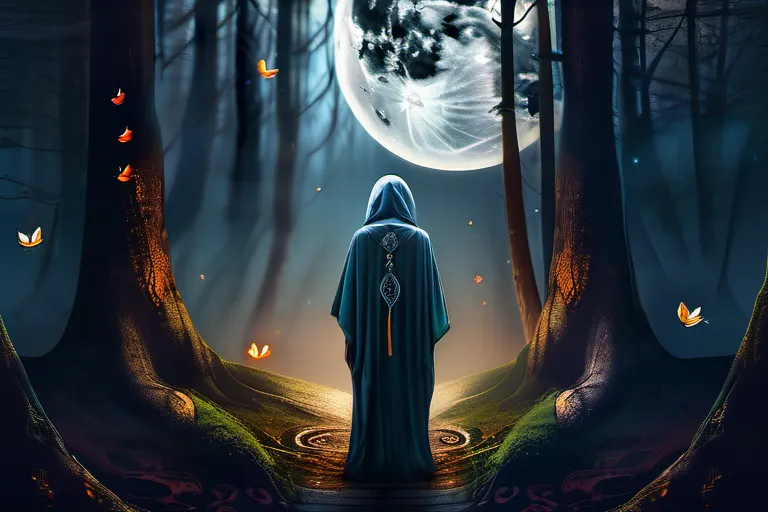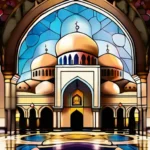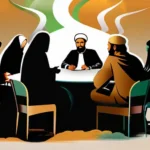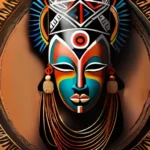Explore the history, beliefs, and practices of modern witchcraft as a religious movement.
Stregheria, also known as Italian witchcraft, is a contemporary pagan religion that has its roots in ancient European traditions. This article delves into the role it plays in religious thought, providing an in-depth look at its history, beliefs, and practices.
The Origins of Stregheria
The origins of Stregheria, a unique blend of Italian witchcraft and modern witchcraft, trace back to ancient times but have seen significant resurgence in recent decades. Have you ever wondered how this mystical path evolved from its roots in Italian folk traditions to its current place as a vibrant religious movement?
At the heart of Stregheria lies a deep connection to nature and an ancestral heritage that spans centuries. Think about it: could the first Strega have been a woman weaving tales under moonlight, or perhaps a man guiding his community through the seasons? These figures, though shrouded in history, laid the foundation for what we know today as Stregheria.
A pivotal figure in modern Stregherian tradition is Diana Paxson, whose 1983 book ‘The Witches’ Bible Compleat’ popularized this practice. Her work brought Stregheria to a wider audience, much like the sun breaking through clouds after a long winter. But who were the key figures before her, and what events propelled Stregheria into the limelight?
One cannot overlook the influence of Patriarcane Stregheria, a tradition credited to Dante Lupo. Lupo’s work emphasized the role of male practitioners in Stregheria, offering a counterbalance to the often-feminine focus seen in other witchcraft traditions. His teachings have been instrumental in shaping how many contemporary practitioners view their path.
The journey from ancient rituals to modern practices is not without its challenges. How did these early practitioners navigate the complexities of blending pagan beliefs with practical, everyday life? Stregheria’s history is a testament to resilience and adaptation, much like the trees that bend yet remain standing in the face of storms.
Core Beliefs and Practices
The core beliefs and practices of Stregheria are like a rich tapestry, woven from threads of ancient Italian folklore and modern religious thought. When we delve into the heart of this tradition, one of the first things that come to mind is its pantheon of deities. Who exactly do Stregheri worship? Are they honoring ancestors or invoking spirits? Isn’t it fascinating how these divine beings serve as both guardians and guides in our spiritual journey?
In Stregheria, the deities are often seen as a collective force rather than individual gods and goddesses. Think of them as a family, each with their own unique role and attributes. For instance, Diana the Huntress is revered for her wisdom and protection, while Hekate stands as the patroness of magic, guardianship, and necromancy. These deities are not distant figures but integral parts of the Stregherian community, much like how a family member might guide you through life’s challenges.
Moving on to magical rituals, Stregheria is replete with practices that aim to honor the divine while also seeking personal growth and spiritual empowerment. These rituals often involve the use of invocation, where practitioners call upon their deities for blessings or guidance. But it’s not just about asking for favors; it’s a sacred exchange, an affirmation of our interconnectedness with the divine realm.
The ethical guidelines in Stregheria are another crucial aspect that sets this tradition apart. Are we merely performing rituals to appease gods, or is there a deeper moral code at play? Stregherians believe in living harmoniously with nature and others, practicing sacredness in all actions. This involves respect for life, truthfulness, and the concept of coven, which is not just a group of practitioners but a community bound by shared values and responsibilities.
In essence, Stregheria’s core beliefs and practices are about more than just worship; they’re about living in a way that honors the divine and nurtures our spiritual growth. It’s a path that invites us to explore our connection with the world around us and within us, making every moment a ritual of self-discovery.
The Role of Nature in Stregheria
The Role of Nature in Stregheria: Investigate the deep connection between Stregheria and nature, examining how this relationship informs its beliefs and practices.
Imagine nature as a vast, intricate web where every thread is interconnected—much like the core belief system in Stregheria. How do we define nature within this context? It’s not just about trees, flowers, or animals; it’s about life itself, intertwined with divine energies and spirits. In Stregheria, nature is more than a backdrop—it’s the very essence of existence.
Stregheria sees the natural world as sacred, a place where deities like Cernunnos and Hekate manifest their power. These deities are not abstract concepts but vibrant entities that can be invoked through rituals and spells. For Stregheri, connecting with nature means engaging with these divine beings in a meaningful way, often through practices such as sacred groves or nature-based altars. These sacred spaces serve as doorways to other realms, allowing practitioners to communicate directly with the natural spirits.
The relationship between Stregheria and nature is symbiotic. Just as trees provide oxygen for us to breathe, so too do the deities within Stregheria offer guidance and protection. Through rituals that honor the Wheel of the Year, Stregheri’s practitioners align themselves with the cycles of nature, embracing both its bounty and its challenges.
Moreover, in Stregheria, respecting nature isn’t just a moral duty—it’s an existential necessity. It’s about recognizing our place within this interconnected web and understanding that every action we take has consequences that ripple through the natural world. By treating nature with reverence, Stregheri practitioners aim to maintain balance and harmony.
How can we live in such a way as to honor these divine spirits and the natural world? Perhaps by adopting practices like reverent offerings, nature walks, or eco-friendly rituals. These acts, small though they may seem, are profound steps towards aligning our lives with the sacred cycles of nature.
In Stregheria, nature is not just a setting for magic; it’s the very foundation upon which the entire belief system is built. It’s a living, breathing entity that connects us to something far greater than ourselves—a true reflection of the intricate web of life itself. Can you see how deeply intertwined nature and Stregheria truly are?
Stregheria and Modern Paganism
Stregheria, often seen as a sister to other modern pagan religions, has carved its unique path within the broader context of modern paganism. How does it fit into this vibrant tapestry? Is it just another form of witchcraft, or does Stregheria bring something distinct to the table?
Imagine Stregheria as a deep-rooted tree in a vast forest of modern pagan religions. This tree stands out not only because of its unique branches but also for the rich soil that nourishes it. Stregheria’s practices and beliefs are deeply intertwined with Italian heritage, making it a bridge between ancient traditions and contemporary spirituality.
One of the key aspects of Stregheria is its emphasis on family and community. Unlike some pagan paths that focus solely on personal spiritual growth, Stregheria encourages a communal approach to witchcraft. This is reflected in its rituals, which often involve gatherings where spells are cast for the betterment of all participants. Is this not a metaphorical way of saying that our actions should benefit everyone around us?
The unique practices and beliefs of Stregheria also set it apart from other forms of modern paganism. For instance, the worship of La Santona, or the Holy Maiden, is a central theme in Stregheria. This deity serves as a powerful symbol of fertility and protection, embodying the essence of Italian heritage. How can we miss such a vivid representation of cultural identity within our modern spiritual practices?
Moreover, Stregheria’s belief in the natural world as a living entity adds to its distinctiveness. The reverence for nature in Stregheria is not just about honoring the elements but understanding that they are an integral part of the divine. Can we really separate ourselves from this divine force that surrounds us?
Thus, Stregheria stands out as a rich and vibrant path within modern paganism, offering a unique blend of spirituality, culture, and community. Its contributions to the broader religious landscape cannot be underestimated. As we explore its role in religious thought, it becomes clear that Stregheria is more than just another tradition; it is a living, breathing entity that enriches our understanding of what it means to be both human and divine.
The Controversies Surrounding Stregheria
The Controversies Surrounding Stregheria: A Comprehensive Guide
Have you ever wondered why some practices within Stregheria have stirred up controversy and debate? Is it just a case of old misconceptions resurfacing, or is there something deeper at play?
Stregheria, with its rich history rooted in Italian folklore and modern witchcraft, has faced numerous challenges. One of the primary issues is the misconception that all witches are practitioners of harmful magic, often linked to the negative portrayal seen in popular media. This stereotype is far from reality; Stregheria focuses on positive intentions and personal growth rather than causing harm.
Another point of contention is the challenge faced by Stregherian practitioners who strive for acceptance within mainstream society. The label ‘witch’ still carries a stigma in many communities, making it difficult for individuals to openly embrace their beliefs without facing skepticism or even hostility. How does one navigate this complex landscape while staying true to their faith?
Moreover, the interpretation and practices of Stregheria can vary widely among different practitioners, leading to debates about what constitutes ‘true’ Stregheria. This diversity is both a strength and a source of controversy, as some feel strongly that there should be more defined boundaries.
The controversies surrounding Stregheria reflect broader issues within the modern pagan community, such as the tension between tradition and innovation, or the struggle to balance authenticity with accessibility. As Stregheria continues to evolve, these debates will undoubtedly continue, shaping its future in interesting ways.
So, how do we move forward? By engaging in open dialogue, embracing diversity, and fostering understanding among all practitioners of modern witchcraft. Let’s work towards a more inclusive and harmonious religious movement where everyone feels valued and respected for their beliefs.
Strengthening Your Connection with Stregheria
Imagine delving into a tradition that has been passed down through generations, where the lines between folklore and faith blur like smoke in the night air. Stregheria, often referred to as the ‘witchcraft of the Italian-American community,’ offers a unique path for those seeking to strengthen their connection with this rich religious heritage. How can one begin to explore such a deeply rooted practice? The journey starts with understanding its history and core beliefs.
Understanding Stregheria’s Roots
Stregheria has its origins in the folk magic of pre-Christian Italy, where ‘streghe’ (sorceresses) were revered as healers and wise women. As Italian immigrants made their way to America, they brought with them a blend of pagan practices intertwined with Catholic influences, creating a unique spiritual landscape. This tradition often revolves around the worship of the Horned God and the Goddess, emphasizing balance and harmony in nature.
Practicing Stregheria
To truly strengthen your connection to Stregheria, consider incorporating some key practices into your daily life:
- Spellwork: Engage in spells and rituals that align with your intentions. For instance, lighting candles can be a simple yet profound way to set positive intentions.
- Altar Work: Create an altar dedicated to the Horned God and the Goddess. It’s not just a place of worship but also a space for meditation and reflection.
- Herbalism: Learn about herbs and their magical properties. Each plant has its own unique energy, making herbal magic both practical and deeply personal.
Remember, the essence of Stregheria lies in its adaptability. There’s no one-size-fits-all approach; it’s a living tradition that grows with you as you explore your spiritual path.
So, what are you waiting for? Dive into the world of Stregheria and discover the magic within yourself. How will you begin to weave this ancient practice into your life?
Conclusion
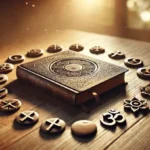 By understanding the unique aspects of Stregheria, we gain valuable insights into the diversity of modern pagan religions and the enduring appeal of ancient traditions.
By understanding the unique aspects of Stregheria, we gain valuable insights into the diversity of modern pagan religions and the enduring appeal of ancient traditions.

